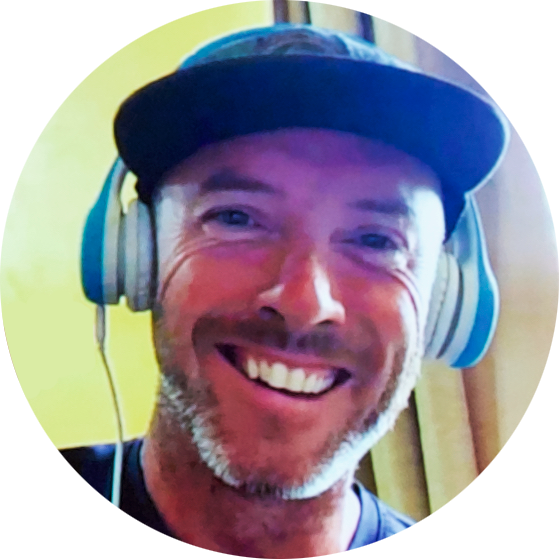
Interview with Mike Quigley
Director of the film To The Hills & Back
Sherpas Cinema has produced several avalanche awareness films over the years, but “To the Hills & Back” is the first one that you directed. Was it your first big project?
Mike Quigley: Oh yeah, for sure. It was the biggest thing I've ever worked on and directed. And then in house with Sherpas, I'm really lucky that I got the opportunity to direct this. Typically, like, there's two other directors at Sherpas and usually they direct all the big films: Dave Mossop and Eric Croston. But it was to my good fortune, that they were too busy. So, I got lucky to direct this film.
It premiered on the Banff Centre Mountain Film Festival in November 2022. Had it been your plan to get the film ready for this important festival?
Mike Quigley: Oh my goodness. It's a miracle that we even got the film into the festival.
Why is that?
Mike Quigley: We were so behind. I mean, I shouldn't say we were behind. That was always my thing. We were doing a really good job, but then all of a sudden this expectation to get it into Banff came out of nowhere and then we were worrying that we didn’t have enough time. We didn't really start editing properly until September. Which is kind of crazy for 45 minutes documentary. I had two editors helping me on this project. They basically brought their sleeping bags into the office and just lived at the office and edited for two months straight. Everything happened organically and on the fly. But we had one thing that was planned out, and that was the script.
What a final sprint! That’s pretty much editing in expedition style. When did you start with the production anyway?
Mike Quigley: The idea came to light in December of like 2020. And from January and through the rest of 2021, we started developing different ideas and looking for characters. When we secured the funding In November of 2021 it became a reality. And then we started filming in January 2022.
“We wanted to create a sense of like: This can happen to anybody, and it doesn't matter who you are or what you're doing. So that was like priority 1.“
Mike Quigley, Director
How did you find your main protagonists?
Mike Quigley: It is different for each character. There’s Brad, the old mountain guide. Adam Campbell. And Katie Combaluzier. Adam's story literally happened in our backyard, and he's a close friend of ours. I've known him for a for a long time, and so his story. So it felt natural to tell his story.
My only concern with Adam was that his story had been told a lot. And that a lot of people would say: I've already heard this story so many times. I don't wanna hear it again. But I realized that most of those people that were telling me that… these people were super connected to Instagram and social media. Which is not my world. And I like to believe that there are other people out there that are into backcountry skiing like myself and that they are also not super connected to social media. So, it felt OK to me and I thought, there's still an audience out there for Adam that hasn't heard his story yet.
How did you find Katie Combaluzier?
Mike Quigley: That's where social media really came in handy. One of our producers, Gabby, is all over social media and found Katie on Instagram, came to me and said: You gotta look at this girl! I read her post and sort of learned about her story a little bit. Then I did my research on her accident. Just after a few phone calls, it became obvious that she needed to be in the film as well.
And Bradford White?
Mike Quigley: I didn't really know too much about Brad, but my boss, Malcolm Sangster, knew a lot about him. He had done his research and said: This guy's gotta get in the film. His family literally started backcountry skiing in the West. Skoki Lodge, where we filmed the scenes with Bradford and his daughter Ginny, is the first backcountry ski lodge in the West, not just in Canada, but in the US. Unfortunately, we didn't really have time to like dive into all this historical background.
The Skokie Lodge scenes have a very different look than the rest of the film. Why did you do that?
Mike Quigley: Yes, Brad’s interview was super challenging. Because it was staged. So it wasn't like a real interview. The idea came from Quentin Tarantino’s “The Hateful 8”. There's this scene where there's a fireplace, and two chairs. And I really wanted to create a sense of dramatization. This is cinema. I love documentary filmmaking but I try to break it out of the documentary style that we’re very used to today from now and then. But this was the first time I'd ever done that and it was kind of weird because it felt super bad and really fake.
I mean, these people aren't actors. Brad's got a lot more experience than Ginny. He's a public speaker and teaches a lot of avalanche courses and does a lot of talks. His dialogue came out great. Ginny is not that media trained, not used to being on a camera. She did great, too - but it was really tricky. But in the edit, it started to feel natural and beautiful.
In the beginning I didn’t even know who Brad should be talking to. And then his daughter came out of nowhere. I started looking into her a little bit more and found out that she was becoming a ski guide. And this was perfect. Everything worked out good in that sense. And then on the day of it was like: Surprise! Ginny's sister is gonna be there, too.
In the end almost the whole family made it into movie. Some things obviously cannot be planned. Why was it so great that the sister turned up, too?
Mike Quigley: The way I had scripted it, was: I had imagined this cool opening scene of this singular person entering the mountains. But that's a little reckless, you probably shouldn't be exploring the mountains by yourself. Ginny had skied to the lodge thousands of time by herself, but when her sister appeared and they could ski together, it was all good.
We come back to the scripted parts of the movie in a second, but first I’d like to know more about the other two interviews with Adam and Katie. What was it like to talk to them about one of the worst days of their entire life?
Mike Quigley: These interviews were definitely the hardest things I've ever done in my career, for sure. As for Adam: I knew what happened already. I knew Adam since before the accident and everything. But I had never really listened to the story properly. He had already done some podcasts. He's pretty open and vocal about it. But when I started listening, I started realizing: Oh my goodness, this is gonna be a really tough interview. We're going to talk for about four hours and probably around the two hour mark we're both going to be bawling our eyes out. It's gonna eventually lead you into a really heavy conversation. Like, if you're psychiatrist and you know that today we're gonna get into the serious stuff. But at least psychiatrists, they're trained, they know how to do that. I just had to lean on like the fact that I'm a human being and I just listened which was incredibly hard.
You didn’t know Katie as well as Adam. Did it make a difference?
Mike Quigley: Katie's was equally heavy, but compared to Adam’s wife she's still alive. So there's a positive thing there. And then obviously where she went with everything and how she turned her life around and made the most of it, like she truly did, you know, she finished Med school, which for someone in a wheelchair, is really hard to do. And then she started racing and winning. By the time, when she got accepted into the Olympics, it actually felt like she was gonna podium for sure. But she had this feeling like she was an impostor and she wasn't focused. And her first three races, she crashed. And so obviously you can't do that at the Olympics and still podium, you know, but at three times she was like, OK, this is great. Like I'm having fun. I'm at the Olympics. Now I don't need to worry about the stress and after those erases all of a sudden, boom, she like crushed it apparently. She did so well that the judges were like, who the heck is this girl, you know? But because of those three crashes, she lost.
There was no footage from Katie’s and Adam’s accidents. So you decided to add some reenactment to the film. How did you do that?
Mike Quigley: We knew that we couldn't do two reenactments for Adam and for Katie that would just get kind of too crazy, so the idea was simply just to create a generalization of: This is what it looks like when you're ski touring in the mountains. It's neither here nor there. And this is what it looks like when you're stressed out. This is what it looks like when you got your beacon out. This is what it could look like when there's an avalanche. You know, it's just very general, broad strokes painting a picture so that anyone in the audience who doesn't know anything about backcountry skiing can follow the story.
So it was your intention to make a film that is comprehensible for anyone no matter what they know about ski touring and avalanches?
Mike Quigley: Yes, this was one of the main driving factors around this avalanche awareness film.
We wanted to create a sense of like: This can happen to anybody, and it doesn't matter who you are or what you're doing. So that was like priority 1. I intertwined Adam’s and Katie’s stories so closely, that for a while, at least in the beginning, that people might even confuse the stories. There is a good reveal right after the accident. OK, it's clear now, that Katie’s avalanche was totally separate from Adam's avalanche. But I think if you pay super close attention and you just listen to every single line of dialogue, you will hear that Katie's accident happened in France and Adam's accident happened in the Rockies.
There might be a little bit of confusion here, but the message is quite clear. What did you want the audience to learn from your film?
Mike Quigley: Just enter the mountains with respect. You know, these are incredibly big dynamic places. And if you're not careful, you know the worst case scenario can happen.
I wanted to make sure that this film focused on not the gear, not the equipment, because I don't think it matters sometimes like how much of that stuff you have. In fact, I think it's kind of one of the biggest problems that the country recreationalists are facing today is that there's so much tech and fancy equipment that you come under this false concept that you're gonna be safe. Because if you're in trouble, I'll pull the air bag, or got a cell phone call for help, right? It's a slippery slope. Technique and equipment can change over the years but not the mentality.
And what would be this mentality?
Mike Quigley: We just need to be aware of that like Brad says, it's all about understanding risk and and having a good gauge on when it's risky and when it's not. And that takes experience. I think with the more you know, the more ease of access, the more equipment, the more technology, for sure you do become safer in those elements but you still have to be approaching mountains with this level of respect. It's just that mentality of like 100 times and nothing bad has ever happened. So nothing bad ever will happen. But they're sort of like feeding that positive feedback loop, right? Like nothing bad ever happened here, so nothing bad ever will happen.
This film is simply just meant to try and break that positive feedback loop that no, you're wrong. Something bad can happen, doesn't matter where you arecor who you are. And so you simply have to go into the mountains with respect.
Thank you for your time, Mike!
“...you can't just rely on luck, you also have to be good. That means having competence, and competence means knowledge and ability.“
Stefan Winter, DAV
BANFF TALK
with Stefan Winter, DAV expert
This year's alpine documentary To The Hills & Back is all about safety in the mountains. There is a special focus on avalanches, which are an omnipresent but also underestimated danger in the mountains.
The scenarios shown in the film are of course extreme examples of what can happen if the wrong decisions are made. But they are also an opportunity to learn from the mistakes of others and to reassess the risks on the mountain again and again on your own tours.
In our interview, DAV expert Stefan Winter explains what you should look out for when you are out in the mountains on skis and snowshoes, how you can best prepare yourself and what opportunities for further training the DAV offers.



